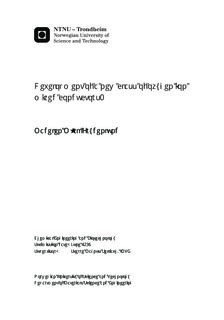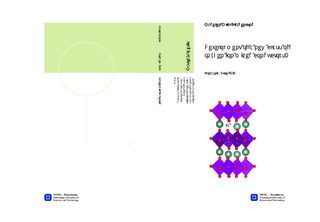| dc.description.abstract | Dense ceramic membranes with mixed ionic and electronic conductivity can separate 100 % pure oxygen from air at elevated temperature. They constitute a much cheaper and more environmentally friendly alternative to cryogenic distillation. Today the challenge with dense ceramic membranes is the long term stability. The high operating temperatures (>800°C) of the membranes lead to chemical degradation and mechanical failure. Hexagonal manganites has the ability to reduce the problems associated with high temperatures. Compared to perovskites, which conduct through formation of oxygen vacancies, hexagonal manganites have the ability to form interstitial oxygen due to a less closed packed structure. In this thesis, it is reported on how the structure and oxygen storage ability changes with varying yttrium deficiency in hexagonal YMnO3. It is important to investigate the possibility of cation vacancies in the structure, as little is known about the defect chemistry of these materials. Yttrium deficient samples of YMnO3 made by solid state synthesis was fired in air, and annealed in varying atmospheres. Hexagonal YMnO3 has the ability to lose 15-20 % yttrium without any notable changes in the structure and composition of yttrium deficient YMnO3. Above this limit, reflections from Mn3O4 hausmannite appears in x-ray diffractograms. With a higher degree of yttrium deficiency in the hexagonal structure prepared in air, a slight contraction of the unit cell along both a and c direction is found. After annealing in O2 atmosphere, the structure expands along the a axis and contracts along the c-axis. The opposite behavior is seen in inert (N2) atmosphere, where the structure expands in c direction and contract along the a axis with increased yttrium deficiency in YMnO3. Above 600 ˚C, during heating of YMnO3 and Y0.80MnO3, oxygen goes out of the materials in both N2 and O2 atmospheres. Upon cooling in O2 atmosphere, a reversible oxygen uptake is seen around 400 ˚C for both YMnO3 and yttrium deficient YMnO3. For stoichiometric YMnO3 the reversible oxygen adsorption is suggested to be attributed to interstitial oxygen, while for stoichiometric yttrium deficient YMnO3 it is believed to be filling of oxygen vacancies. The reversible oxygen uptake of YMnO3 was calculated to be δ= 0.034. Moreover, in this thesis it is also reported on the synthesis of an asymmetric membrane consisting of 15 % titanium substituted YMnO3. The asymmetric membrane did not yield a dense functional layer of nanocrystalline YMn0.85Ti0.15O3 on top of the porous support after sintering. | nb_NO |

